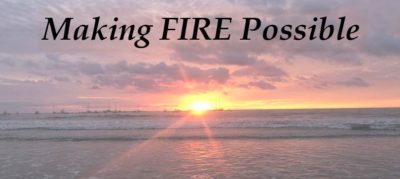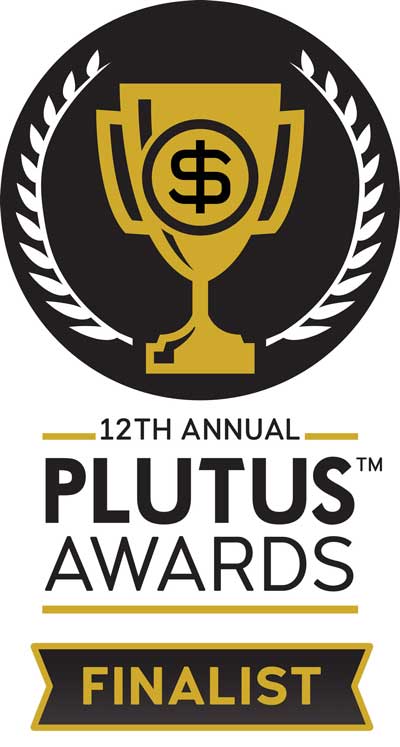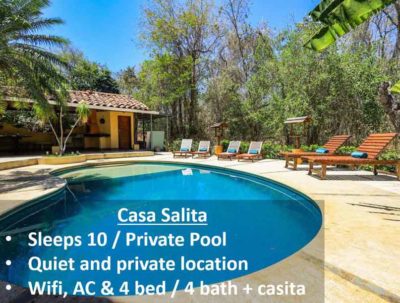As we’ve been writing about on here since the beginning of this website, our youngest daughter goes off to college later this year, and that will be the moment we officially become empty-nesters and can employ our FIRE escape plan. She is now receiving her college decisions, and scholarship / financial aid offers, and so her college price tag is become more clear by the day.
Private college costs $300,000 over four years, which assuming the 4% withdrawal rule would make up a portfolio that could throw off $12,000 of income, or $1,000 per month. If you have two kids (which we do), you could be looking at $600,000 of college costs, or a portfolio that could throw of $24,000 of income.
That’s not enough to achieve FIRE in New York City, where we currently live, but could get you a basic retirement in a lower-cost location. International Living frequently covers locations where you can retire on social security alone. This IL piece names several retirement destinations where you could live on $2,000 per month, including Costa Rica, where we already own a place.
A portfolio equal to the cost of two private college degrees is enough to achieve FIRE!
That $600,000 opportunity cost is all just an academic exercise because we already have one child who has completed college. She ended up getting a full-tuition scholarship to a public New York City college, so we also saved on room and board. When I compare her public city college costs (even without the scholarship) to what it would have cost to attend my private college alma mater, choosing public college over private college saved us well over $200,000 — enough to buy a house at the current median US home price.
With our second child making college decisions over the next few weeks, the college v. FIRE debate rages again. Based on our youngest’s interests and needs, the private colleges she is considering are arguably a better fit than the public colleges. With scholarships and financial aid already offered from schools she has been accepted to, the difference in cost over four years is smaller than with the schools our oldest considered, but the overall difference between public and private college will still be over $100,000 over the four years.
That $100,000 isn’t going to make or break our FIRE escape plan. However, $100,000 spent now instead of being allowed to compound over time is significant, since we are still in our 40’s and looking at 30-50 more years of compounding (knock on wood).
Private college or a multi-million dollar retirement fund?

If I took the $100,000 difference between the cost for her to attend public vs private college and left it in our online savings account currently paying 2.4% interest, it would more than double, even triple over time (assuming the same 2.4%):
- After 30 years, $203,703
- After 40 years, $258,225
- After 50 years, $327,339
Of course, we’d be pushing 100 years old at the 50-year mark, and inflation would take most, if not all, the return, but I was only modeling a savings account rate of 2.4%. If you use a 6% return, which is lower than the historical return of the stock market over long periods of time, $100,000 would grow to almost $2 million at the 50-year mark:
- After 30 years, $574,349
- After 40 years, $1,028,572
- After 50 years, $1,842.015
We would be pushing 100, but our youngest would be 68. So, for the same money as a private college degree, she could go to public college and fund a retirement account with the difference.
This account would grow to over $1.8 million when she’s at retirement age. (If you model the fund growing at 8%, a more commonly used figure for stock market returns, that $1.8 million becomes almost $4.7 million!
The college experience is more than just the money
Of course, the financial calculation is just one aspect of the college decision. These are formative years, and investing in yourself pays off, not just financially, but also in other less quantifiable, but equally important ways.
We will be visiting all of the colleges in play and looking at academics, social environment, development opportunities, and the comfort factor. It’s her education, after all, so it’s important that she owns it and wants to be there.
======
Once we have a decision, we’ll have to figure out how to pay for it. Our real estate portfolio will certainly be part of the equation, but that will be a creative exercise for another blog post!


 We are Scott and Caroline, 50-somethings who spent the first 20+ years of our adult lives in New York City, working traditional careers and raising 2 kids. We left full-time work in our mid-40’s for location-independent, part-time consulting projects and real estate investing, in order to create a more flexible and travel-centric lifestyle.
We are Scott and Caroline, 50-somethings who spent the first 20+ years of our adult lives in New York City, working traditional careers and raising 2 kids. We left full-time work in our mid-40’s for location-independent, part-time consulting projects and real estate investing, in order to create a more flexible and travel-centric lifestyle.  Financial independence and early retirement is not something we originally focused on, but over time realized it was possible. Our free report,
Financial independence and early retirement is not something we originally focused on, but over time realized it was possible. Our free report, 







